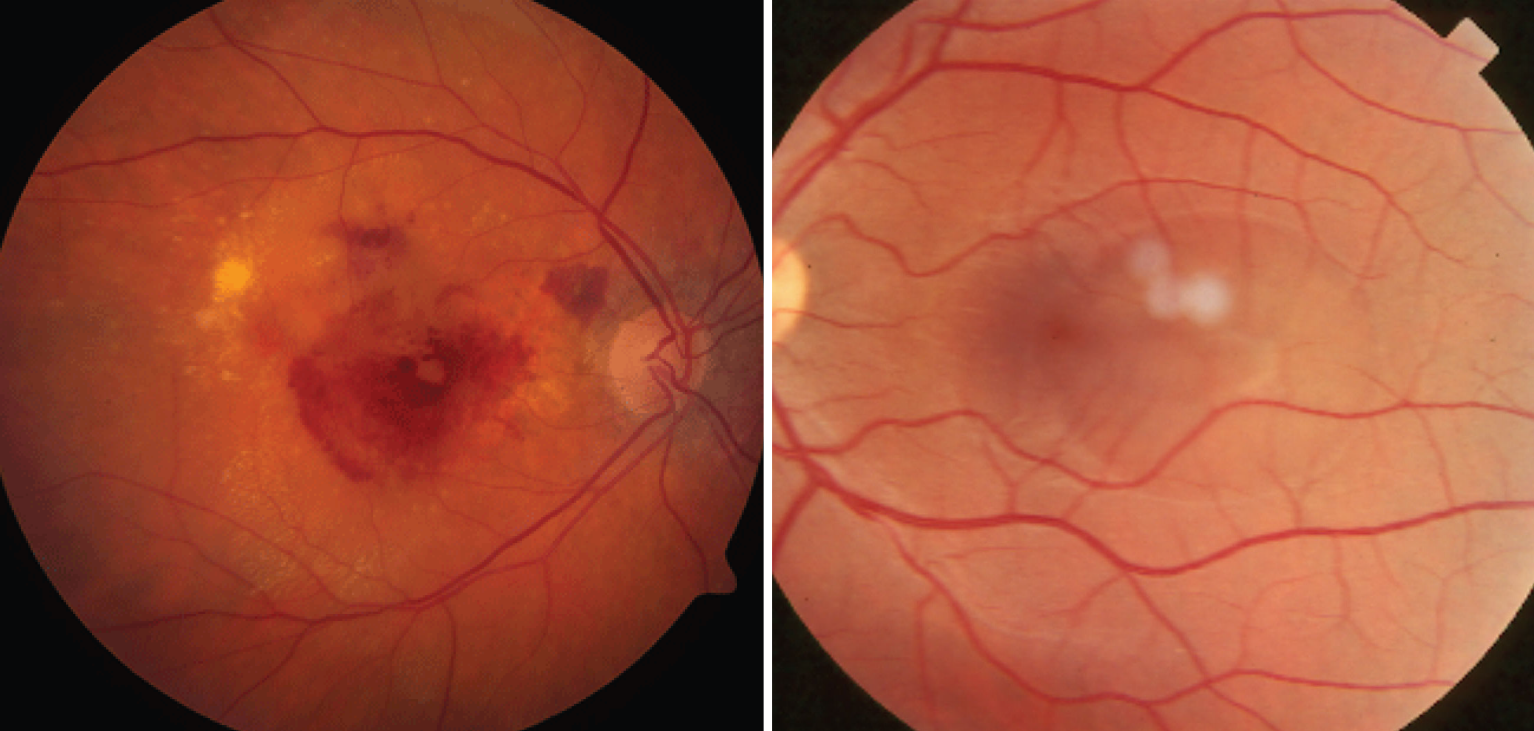 |
|
A genome-wide association study found shared loci in age-related macular degeneration (left) and central serous chorioretinopathy (right) that may play a role in both diseases’ development. Click image to enlarge. |
Genome-wide association studies (GWAS) are able to identify variations associated with particular diseases by scanning genetic markers in many individuals’ genomes. These analyses can turn up shared biological mechanisms underlying diseases and identify overlapping genetic components. Previous GWAS of age-related macular degeneration (AMD) have shown shared components between exudative and atrophic AMD, as well as intermediate and advanced AMD. Polypoidal choroidal vasculopathy and typical neovascular AMD share a polygenic architecture.
Studies have reported shared genetic associations between AMD and central serous chorioretinopathy (CSC). Researchers who had previously conducted a GWAS of CSC in a Japanese population identified two associated loci. Noting that one of these had also been identified with AMD in another GWAS in Japanese patients, the researchers conducted a large-scale GWAS in this categorization of people to learn more about AMD pathogenesis. They found two shared associations of novel loci between AMD and CSC.
The association analysis enrolled 3,772 AMD cases and 16,770 controls. The researchers conducted a meta-analysis of two independent GWAS (2,663 AMD cases and 9,471 controls) with the imputation reference panel for genotype imputation specified for the Japanese population (n=3,541). They also conducted a replication study with an independent set of 1,109 AMD cases and 7,299 controls.
The meta-analysis identified six loci that were significantly associated with AMD, four of which were already known to have a connection with the condition (CFH, C2/FB, TNFRSF10A and ARMS2). The other two loci were novel (rs4147157 near WBP1L and rs76228488 near GATA5), had strong associations and were significantly associated with CSC. The researchers confirmed these associations with the replication study.
Genetic co-localization analysis for these novel loci estimated a posterior probability of shared causal variants between AMD and CSC at 0.39 and 0.60 for WBP1L and GATA5, respectively. The genetic correlation analysis for epidemiologically noted that clinical risk factors suggested a shared polygenic architecture between AMD and smoking cessation.
The researchers wrote in their paper that there may be “shared causal variants for both diseases underlying these new loci.” They also noted that, largely consistent with their study, lifestyle factors such as smoking cessation/initiation and lifetime smoking index in a white population were significantly associated with reduced/increased risks of AMD while blood pressure and alcohol consumption weren’t. However, in their study, “Smoking initiation did not show significant genetic correlation with AMD.
“Despite the differences, our findings suggested that some AMD heritability can be explained by genetic components that affect Japanese lifestyles,” they concluded. These findings increase our understanding of the genetic architectures of AMD and CSC and suggest that the genetic components in play differ [between] Japanese and other populations.”
Akiyama M, Miyake M, Momozawa Y, et al. GWAS of age-related macular degeneration reveals two new loci implying shared genetic components with central serous chorioretinopathy. Ophthalmology. 2022. [Epub ahead of print]. |

